To me, the essence of Australia is deep blue skies stretching as far as the eye can see; rich red soils bearing dry, oxidized iron; the distinctive blue-green foliage of Eucalyptus set amongst twisting, mottled-grey limbs; perhaps a small family of roos tucking into soft, long grass in its dappled shade. Nowhere else on earth will you come across a scene like this.
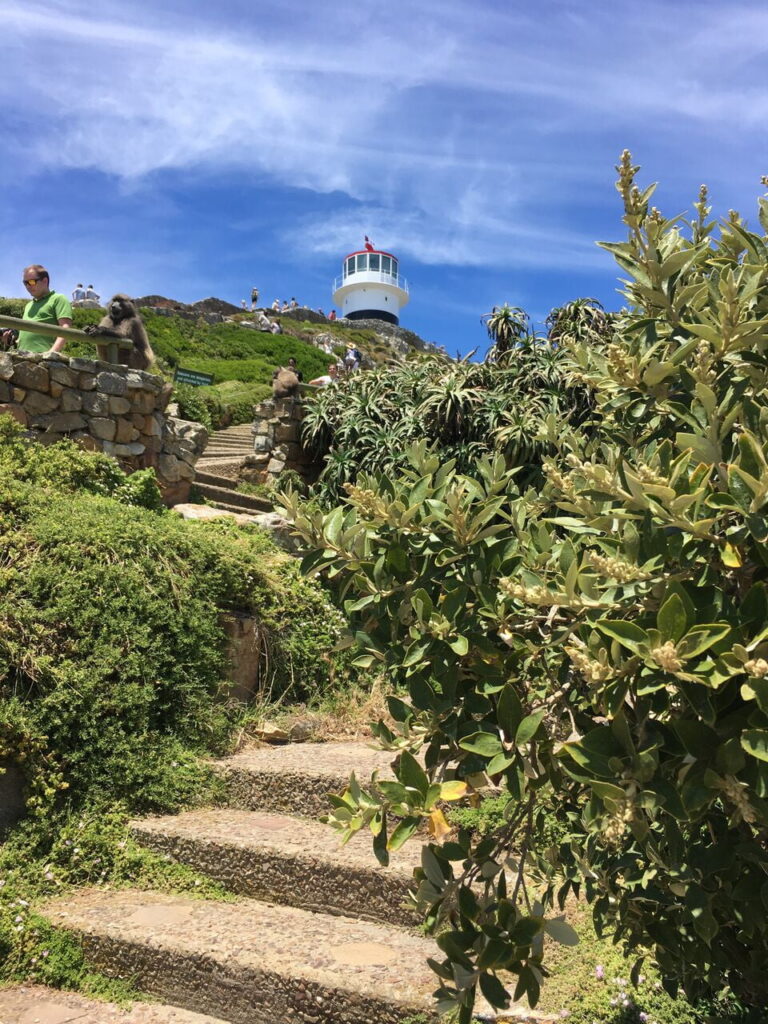
This scene from the Cape of Good Hope could easily pass as Australia. Photo: Janna Schreier
But that’s not to say Australia doesn’t have much in common with other parts of the world. This summer I visited South Africa for the first time and if I’d ever doubted the concept of a Gondwana supercontinent before, I certainly didn’t after. Despite the fact that Australia and South Africa parted company some 200 million years ago, I instantly had a feeling of being at home: so much of the South African landscape took me back to my travels across Australia.
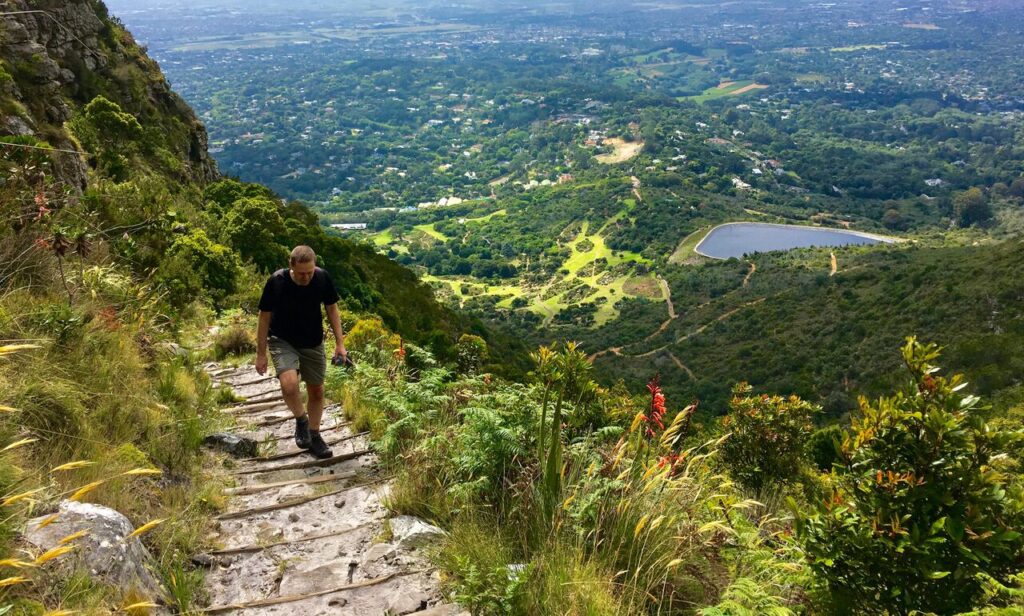
Lush and diverse vegetation on the climb up Table Mountain in Cape Town. Photo: Janna Schreier
Where natural Australia is all about simplicity and repetition, South Africa – at least the Western Cape – is about diversity and intensity. There are almost as many different plant species packed into the tiniest tip of South Africa, hardly visible on a globe, as there are across the whole of Western Australia. Yet both this simplicity and diversity – seemingly diametrically opposite characteristics – are compelling and transfixing, neither one more so than the other.
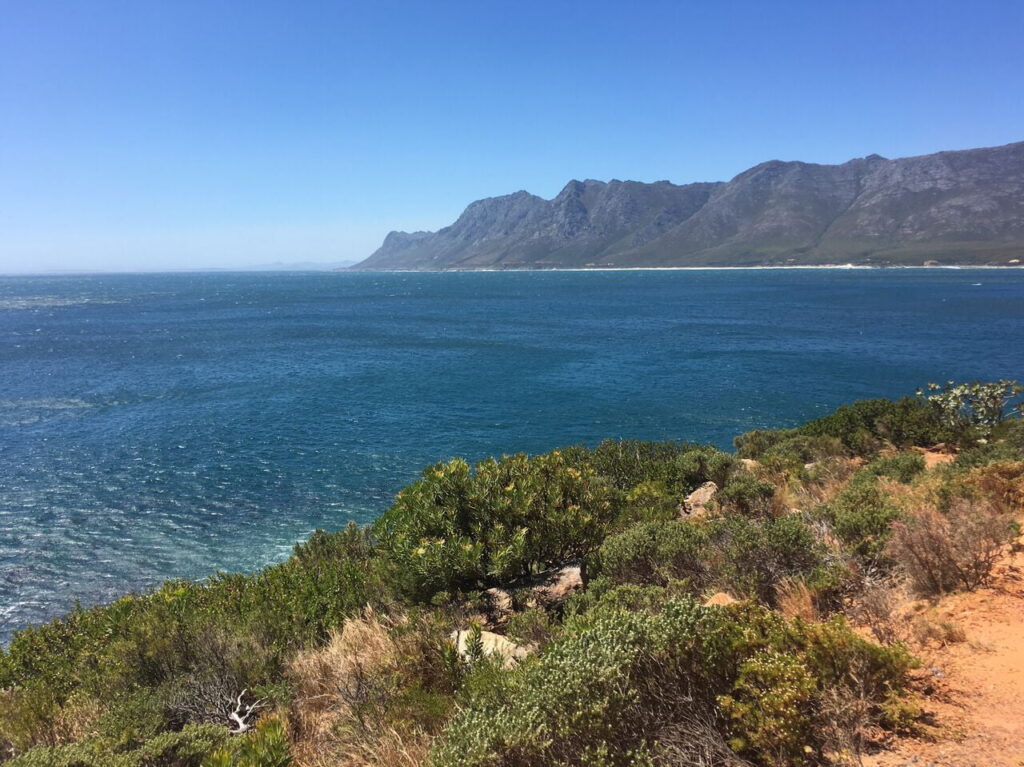
South Africa’s answer to the Great Ocean Road: The Clarence Drive Scenic Route. Photo: Janna Schreier
But there is much in common. The vast, open spaces; intricate, rocky coastlines; drought-tolerant, grey-green vegetation; blue, blue sky; and the hot, drying sun beating down across it. Perhaps the Eucalyptus that have found their way to Africa and the Agapanthus, so ubiquitously planted in Australia, also help blur these boundaries.
The South Africans have a deep pride in their natural landscapes. They enthusiastically reel off a wide range of facts about their unique vegetation and even have a bespoke language for it: you hear much of the ‘fynbos’ spread across the Western Cape. And whilst there are still plenty of English-style gardens to be found, I get the sense they embrace South African cultivars more widely than Australians do their own.
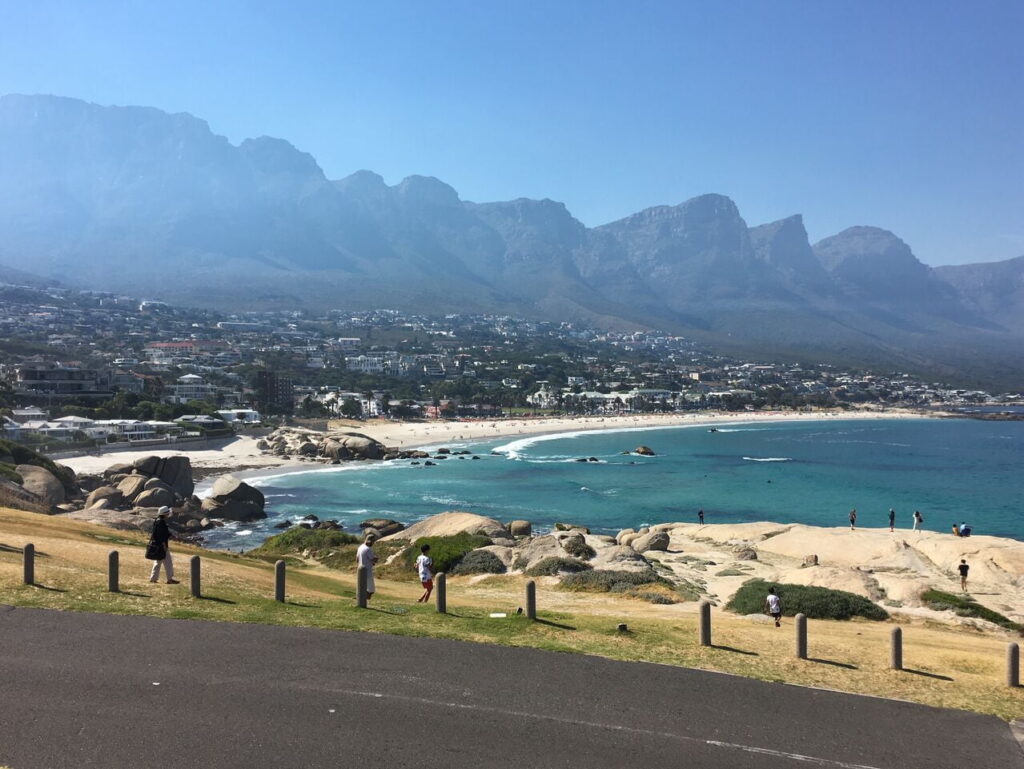
Beach life on the Cape Peninsula. Photo: Janna Schreier
The South African landscape is drop dead gorgeous. It’s more relatable to traditional gardens than the Australian outback, with an abundance of year-round showy flowers and thick, lush growth. Yet my biggest yearning, as I came away, was to take this inspiration and begin work straight away creating my next Australian garden.
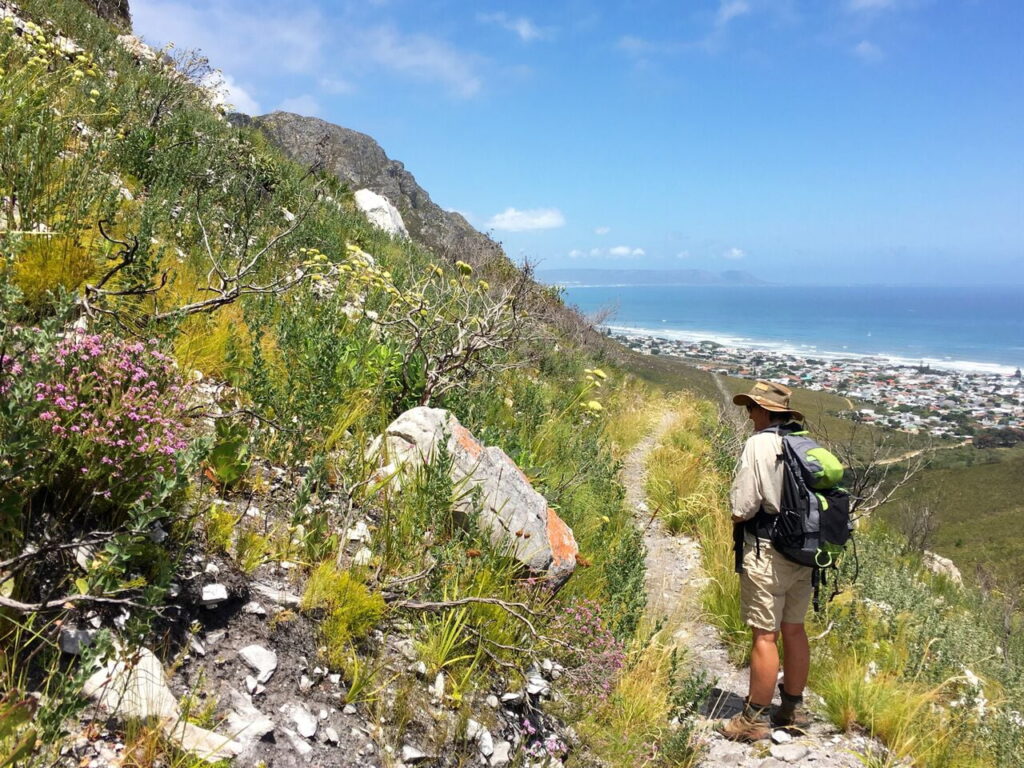
Looking out over the town of Hermanus from Fernkloof Nature Reserve. Photo: Janna Schreier
I’m a strong believer that the very best gardens take cues from their surroundings: their natural surroundings, nearby architecture and the people around them, both past and present. They identify the ‘essence’ of a location, bringing out its strengths and building on its character. But I felt there was much of natural South Africa that could guide us in our garden-making; that could help bridge the seemingly enormous gap between bush and garden that appears to deter us from creating gardens with an Australian feel. We can perhaps summarise these findings into three areas:
Abundance
The fynbos vegetation is thick. Really thick. You don’t see wide areas of ‘dirt’: an opportunistic seedling will emerge wherever there is a tiny chink of light. In many Australian ‘bush’ gardens, bare lower stems sit above bare brown soil: not the paradisiacal vision of a garden most of us relate to. But add shade-loving groundcovers beneath it, or prune to minimise bare stems and the bush immediately becomes much more ‘garden-like’. We feel good when we are amongst lush, healthy, thick plantings – I think this is partly why we are so attracted to the green, green English look – yet we can create lush, thick and actually much healthier plantings with a native and native-complementary plant palette and create something much, much more in so doing. We can create a garden with the essence of our wonderfully unique country.
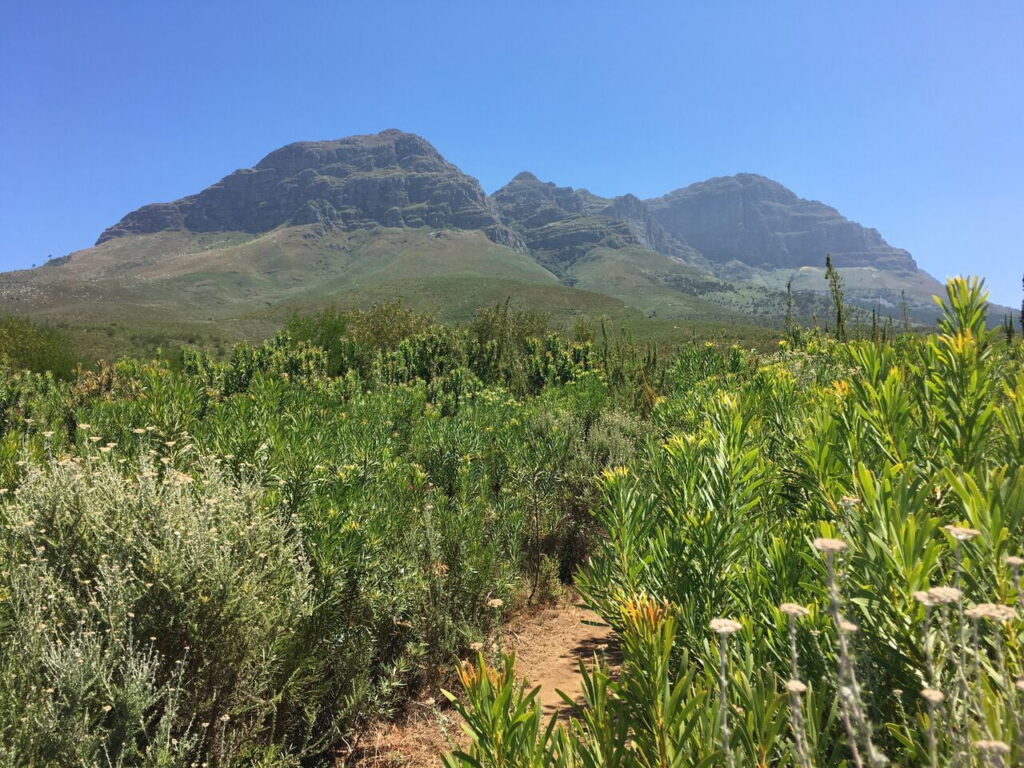
There is barely room for a path amongst the thick vegetation at Helderberg Nature Reserve. Photo: Janna Schreier
Intensity of interest
I am madly in love with Australia’s simple, very readable landscape. But suburban gardens need suburban interest. A key part of the landscape’s attractiveness is the very vastness we cannot replicate in the average garden. We need to take its essence and adapt to suit. South Africa’s intensity of interest, created through its immense diversity, is a much more suitable planting style for the average garden, with repetition for cohesion but many, many forms, textures and colours inhabiting every square metre of land. We need to look much wider for new species – whether native or not – that give an essence of Australia, whilst providing the variety we crave in our small blocks. In am writing this from Texas, where I have seen so many plants perfectly suited to much of the east coast of Australia. Texan natives that would blend perfectly with our natives, eliminating any chance of a stereotypical, dull, native garden, bringing new textures and forms and variety. Easier to say than to do – obtaining more unusual plants is never simple – but for keen gardeners, the search should be part of pleasure and fun and shouldn’t hold us back.
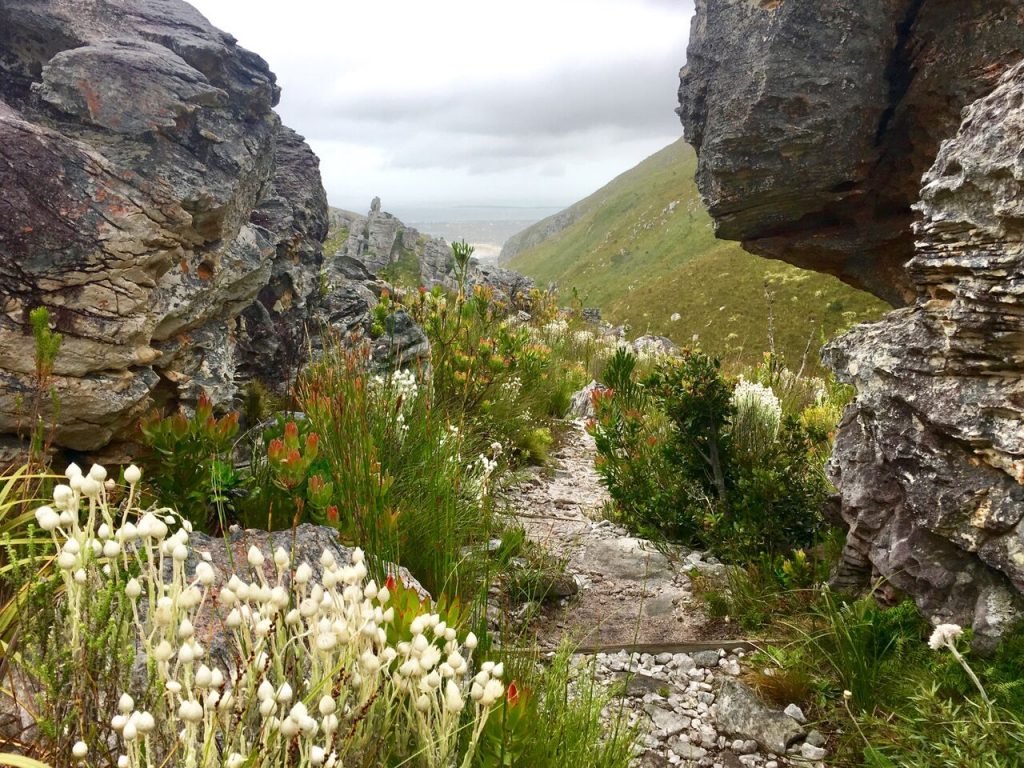
A remote hillside within the Kogelberg Biosphere Reserve: every time I look at this photo I visualise a perfect planting plan, yet this is entirely natural. Photo: Janna Schreier
Right plant, right place
When you see the land so thick with so many species, it’s clear that competition for light, water, nutrients and pollinators is strong, yet each species has its own place in the world. All are optimised for ever so slightly different conditions and can get ahead of the others in their own perfect spot. They are so happy in their home that they thrive, look healthy and maintain their ground. It’s a clear message to take heed of Beth Chatto’s advice to use “the right plant in the right place”. We should learn our soil type inside out, be observant of sun and shade patterns and then optimise our plantings accordingly; move any plant that doesn’t look happy; on the whole, seek plants from similar conditions across the world; think more laterally to build up our plant palette. Not every plant has to star, but that ground cover at the foot of bare stems can make the world of difference to the overall effect.
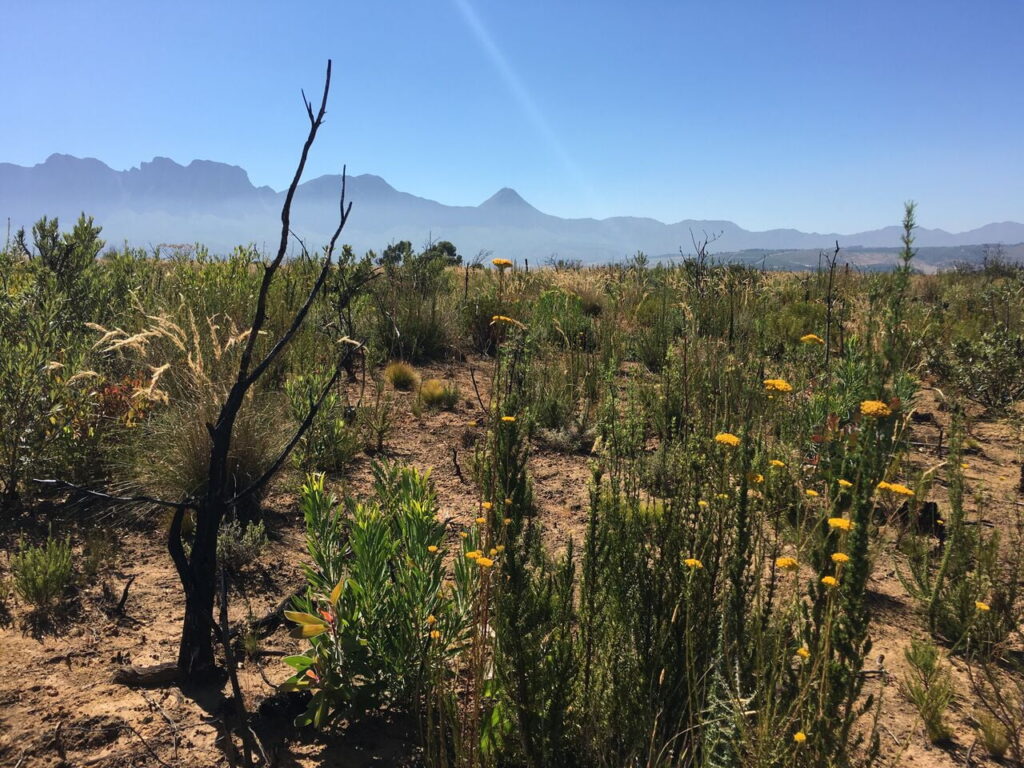
A recent controlled burn at Helderberg Nature Reserve doesn’t stop new growth for long. Photo: Janna Schreier
My visit to South Africa helped me see the potential for Australian gardens. It highlighted ways of achieving a garden that has the essence of our stunningly beautiful country, whilst simultaneously delivering all the joy that a garden can bring.
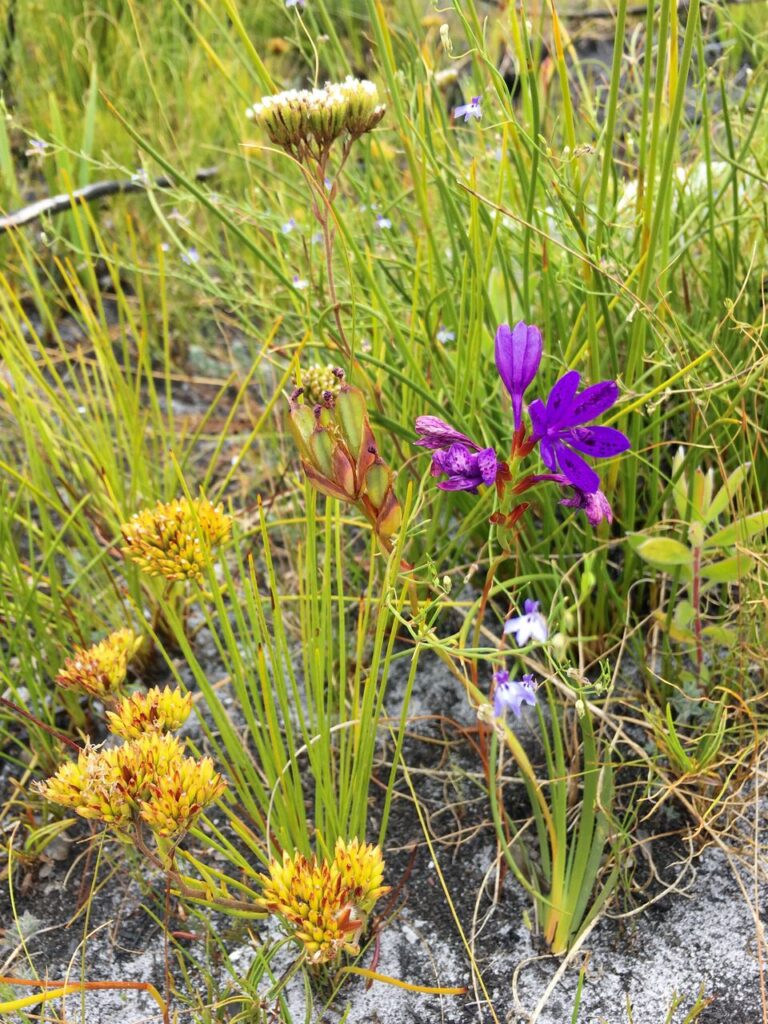
Such intensity and diversity at Fernkloof Nature Reserve. Photo: Janna Schreier
So, let’s celebrate the simplicity and repetition of our natural spaces. It’s part of what makes Australia, Australia: a unique and enchanting country. But gardens are different and we don’t need to compromise here. With a little thought and imagination we can have our cake and eat it – create the essence of Australia within the joy of a lush, interesting and beautiful garden. I wonder if you could experience the vegetation of South Africa and not feel the very same?
